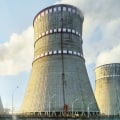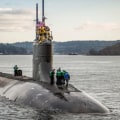Nuclear energy has been a source of power for many years, but it has also been a source of controversy due to its potential risks. Radioactive waste, safety issues, and the risk of nuclear proliferation are all concerns that must be addressed when considering the use of nuclear power. In this article, we will explore the safety concerns associated with nuclear power and how they can be addressed.
Radioactive Waste
One of the major environmental concerns related to nuclear energy is the creation of radioactive waste, such as tailings from uranium mills, spent (used) reactor fuel and other radioactive wastes.These materials can remain radioactive and hazardous to human health for thousands of years.
Safety Issues
Concerns for the safety and safety of nuclear power reactors, together with high capital costs and public opposition, have played an important role in hindering the expansion of nuclear energy. While serious accidents such as Three Mile Island, Chernobyl and Fukushima have increased global awareness of safety issues, the September 11, 2001 terrorist attacks in the United States increased concern about potential threats to the safety of the nuclear power industry. Despite old and new safety challenges, tracking the licensing and construction of pre-approved advanced reactor designs appears, combined with the implementation of operating practices aimed at reducing operating costs and offering federal financial incentive programs or state for nuclear energy, to be an effective means of addressing the challenges posed by security concerns.Generation III and IV reactor designs, based on passive safety principles, are planned to meet the newest and highest safety requirements while focusing on reducing capital costs.
Nuclear Regulatory Commission
The Nuclear Regulatory Commission (NRC) licenses plants for 40 years, and then plant owners can request license renewal for an additional 20 years. Regulations don't limit the number of times a license can be renewed. Nuclear power plant regulators oversee operational safety, natural hazards (such as hurricanes, floods, and earthquakes), human error, mechanical failure, and design flaws can still trigger release of radioactive contamination.Chernobyl AccidentSince nuclear power began operating in the 1950s, there have been three major accidents in commercial nuclear reactors. The 1986 accident at the Chernobyl plant in Ukraine (then part of the Soviet Union) is considered the worst nuclear disaster in history. An uncontrolled power surge caused explosions and fires that destroyed Unit 4 of the plant and released radioactive material, after which government secrecy and misinformation put victims at much greater risk. Radiation pollution has reached Sweden.
Instead of trying to clean up local pollution by collecting radioactively contaminated material and moving it to a permanent disposal site, the Soviet government created an “exclusion zone” within a radius of approximately 19 miles around the plant, where access remains restricted. Approximately 350,000 people had to be permanently resettled off-site. The accident killed 31 people directly and caused thousands of additional deaths from cancer.
Radiation Protection Standards
Current radiation protection standards are based on the premise that any exposure to radiation carries some risk, and that risk increases directly with the dose of exposure.This method of estimating risk is called the “no-threshold linear dose-response model” (LNT). There is strong scientific consistency, even from groups such as the U. S. UU.
National Academy of Sciences and the National Council on Radiation Protection and Measurements, which supports the use of the LNT model to develop practical guidance that protects workers and the public from the potentially harmful effects of radiation in balance with important and commercially justified uses of radiation. To limit the harmful impacts of radiation to workers from external radiation sources, the LNT is a standard of protection that we must maintain in place.
Financial Incentives
In some states, existing nuclear reactors are subsidized because of concerns about job losses, maintenance of local tax bases and climate impacts should nuclear plants be replaced by fossil fuels such as gas-fired power plants. Companies should also need to show their books to prove that plants are really in financial distress.Nuclear ProliferationOne of the main concerns about peaceful nuclear energy programs is the risk of nuclear proliferation -the spread of nuclear weapons and usable weapons material, technology and expertise. The same technology used to make nuclear fuel for power plants can also be used to produce explosive material for nuclear weapons. In other words, if countries have the capacity to enrich uranium and reprocess plutonium, they can also manufacture nuclear warheads. In a number of countries peaceful nuclear materials and equipment have been diverted to secret nuclear weapons programs.
The United Nations Treaty on the Non-Proliferation of Nuclear Weapons (NPT), which entered into force in March 1970, aims to prevent the spread of nuclear weapons and weapons technology, promote cooperation in peaceful uses of nuclear energy and ultimately achieve nuclear disarmament. The NPT has almost universal participation with 191 parties although there are four countries (India, Israel North Korea and Pakistan) that have nuclear weapons but are not part of NPT.






